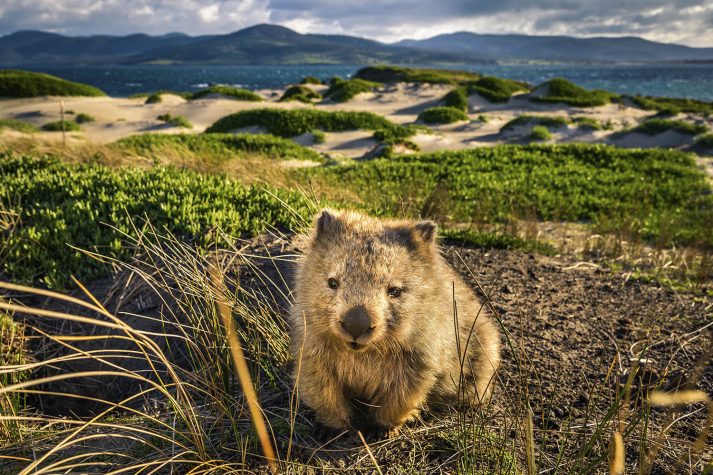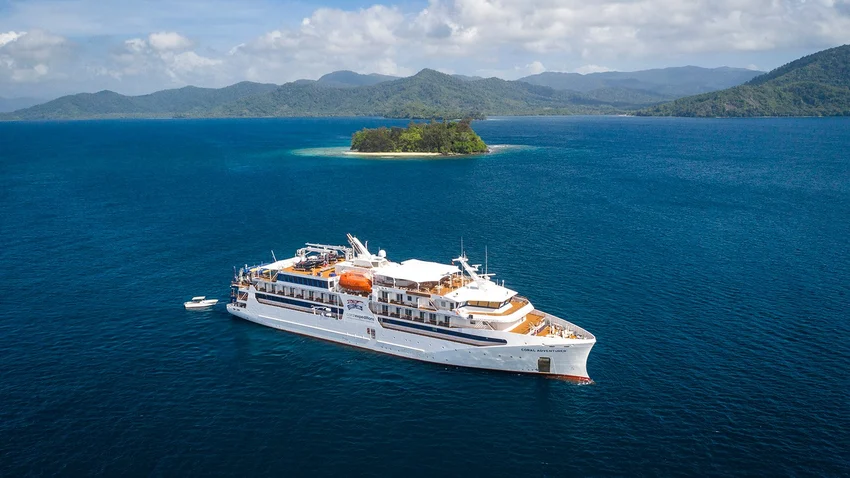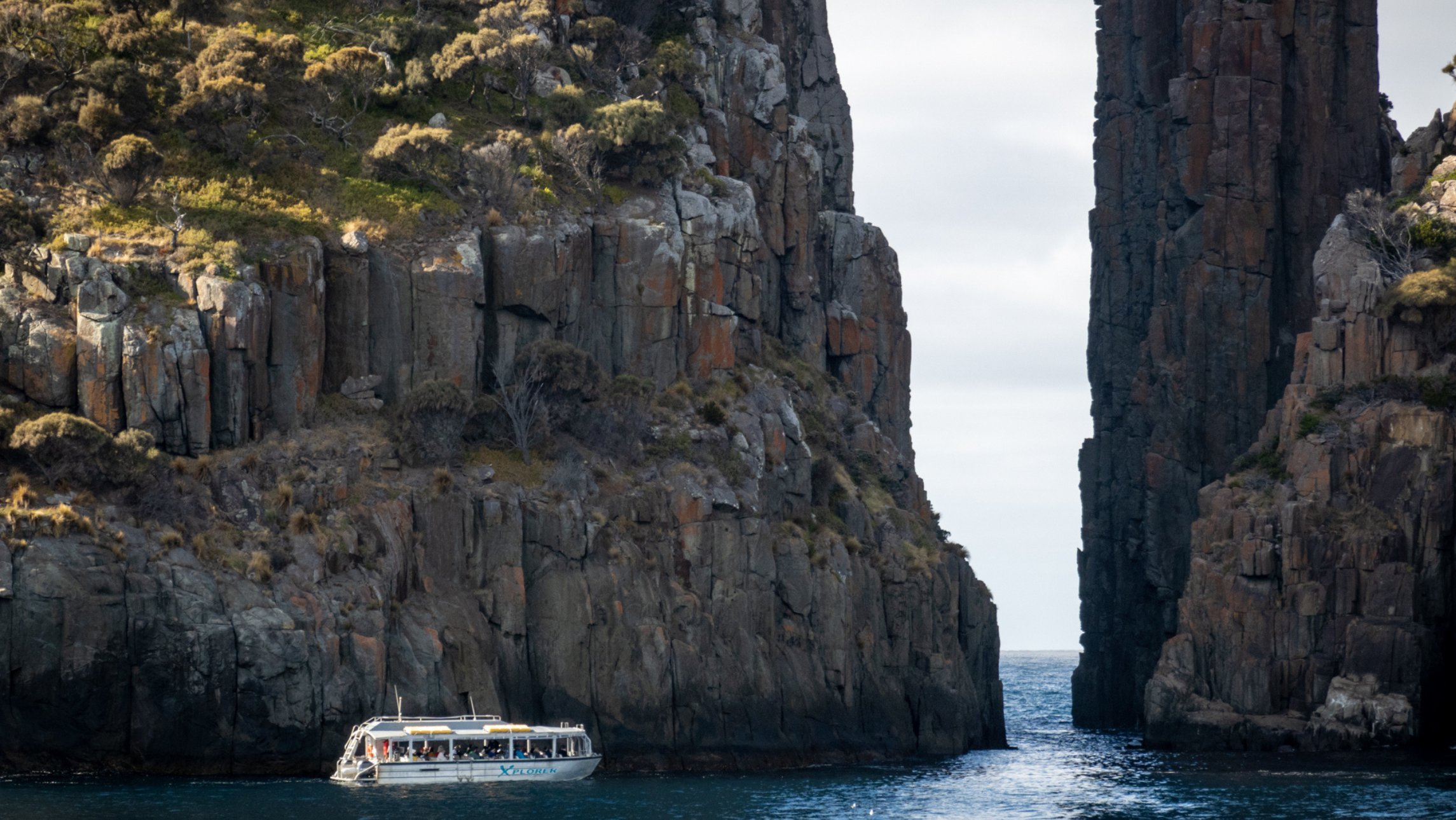It’s a top choice for lovers of the great outdoors but Craig Tansley finds he has parts of Tasmania’s east coast all to himself.
It’s Saturday afternoon in the middle of the summer holidays in Coles Bay. Coles Bay – halfway down Tasmania’s east coast – is Tasmania’s answer to Byron Bay: it’s where everyone flocks when the mercury rises. You better believe it: Tasmania’s east coast is a certified, bona-fide beach-holiday destination.
And so I’m ready for chaos – traffic jams, pedestrians wandering aimlessly in front of my car – but there’s none of that. Ahead of me granite mountains (The Hazards) rise out from calm, blue water. Families picnic by the roadside. I drive beyond and find a car park at the start of the walking trail to Wineglass Bay. It’s crowded with buses, yet on the track I see more wallabies than tourists. The walk is a six-kilometre return trail which climbs to a lookout with views across the beach below. Then it winds its way down through thick coastal forest to a kilometre-long beach ranked amongst the world’s top 10. And yet, when I make it here, I have it almost entirely to myself.
Tasmania does this… it absorbs visitors – perhaps it’s because a third of the island is made up of national parks – but even as tourist numbers multiply, you never see anyone else. It’s the dream destination for the ‘tourist who hates other tourists’ and the perfect place for anyone craving adventure.
You don’t have to go far to get it either. When I visit, I fly into Hobart and stay overnight in a hotel on Hobart’s waterfront. The next morning I’m taken by speedboat to Bruny Island (access is generally by way of a short ferry crossing from Kettering, 35 minutes’ drive south of Hobart).
Despite being so close to Tasmania’s largest city, I’m soon in the wilderness, tossing my backpack into a glamping tent on a 40-hectare block of native bushland above the island’s remote south coast.

Hiking is what my trip with Bruny Island Long Weekend is all about. Bruny Island is 50 kilometres long and home to only 800 locals. The largest settlement, Adventure Bay, houses barely 150 of them. I’ll be doing two five-hour walks across three days. The first hike has me scaling the top of a bluff, past a mutton bird colony. We stop to sit on columns of ochre-coloured rocks with views all the way east across to the Tasman Peninsula. I walk back across a deserted beach beneath towers and arches of Jurassic dolomite created across 175 million years.
The next morning, I walk along the island’s southern coastline at Cloudy Bay. There’s nothing south of us till Antarctica as we climb through coastal heath and flowering banksia where black cockatoos feed and past hidden bays where bull kelp gathers under dolomite sea cliffs.
In between hiking, I gorge on Bruny Island’s iconic oysters, cut fresh off the rocks and served with a slice of lemon. Dinners are spent around a table outside a central dining cabin. In the height of summer, evenings don’t look like darkening till well after nine. In three days here on Bruny Island, I only see a handful of other travellers outside my group. The island is home to some of Tasmania’s best-preserved wilderness – and it’s all just an hour by boat from Hobart’s CBD.
Because of Tasmania’s compact size, nothing is ever far away. My next adventure – a journey along the state’s east coast – starts near the top of Tasmania in the state’s second-largest city, Launceston; yet it’s barely two hours away by car.
I’ll be powering my way down the coast on a cycling, kayaking and hiking adventure with World Expeditions. I cycle past tiny farming settlements, along winding mountain roads which lead to the coast. Then I cycle through sleepy fishing villages and past green vineyards along a coastline of lonely white sand beaches.
I like the perpetual motion of this journey – there’s a sense of purpose to being here because we’re always getting somewhere, and we’re burning no fossil fuels doing so. We spend the night in a cabin beside the ocean at Bicheno, watching little penguins march across rocks under the light of the stars.

Each town on this coast is sleepier than the last, most were hand-built by convicts. Our trip culminates on one of Tasmania’s best adventure locations: Maria Island. Accessible only by ferry, and ensconced within a national park, the island is a natural wildlife sanctuary. At night wombats and Tasmanian devils wander right past my tent, while 11 of Tasmania’s endemic bird species are found here. I camp amongst the ruins of a 19th-century convict probation station and, by day, hike past sea cliffs, grasslands and open forest along boulders leading to steep mountain peaks overlooking the Tasmanian mainland.
And there’s many more ways to access adventure along Tasmania’s picturesque east coast. From Maria Island I sail aboard a 23-metre luxury yacht to hike uninhabited islands off Tasmania’s east coast, as well as accessing Wineglass Bay from the other side of Coles Bay. Here, days are spent hiking, but evenings are spent with sunset drinks on the beach and dinners under the moon back onboard.
To me it epitomises the luxurious adventure options available on Tasmania’s east coast and Bruny Island: there’s never anyone but your fellow passengers to share the wilderness with.
Take Me There
COVID-19 advice: Tourist visits are not currently possible as Tasmanian border restrictions apply. But it’s a good time to plan ahead as tour operators are advertising deals and offers such as $0 deposit and 24-month booking guarantees.
Tours: The three-day Bruny Island Long Weekend tours usually runs October-April (see taswalkingco.com.au). Discover Tasmania’s east coast on a six-day cycle, hike and kayak holiday (see worldexpeditions.com) or take a four-day sail and walk tour (see taswalkingcom.au).
Explore more: discovertasmania.com.au








